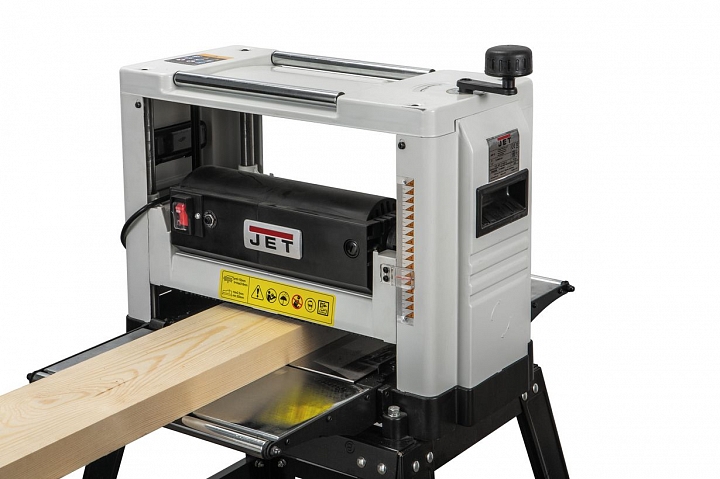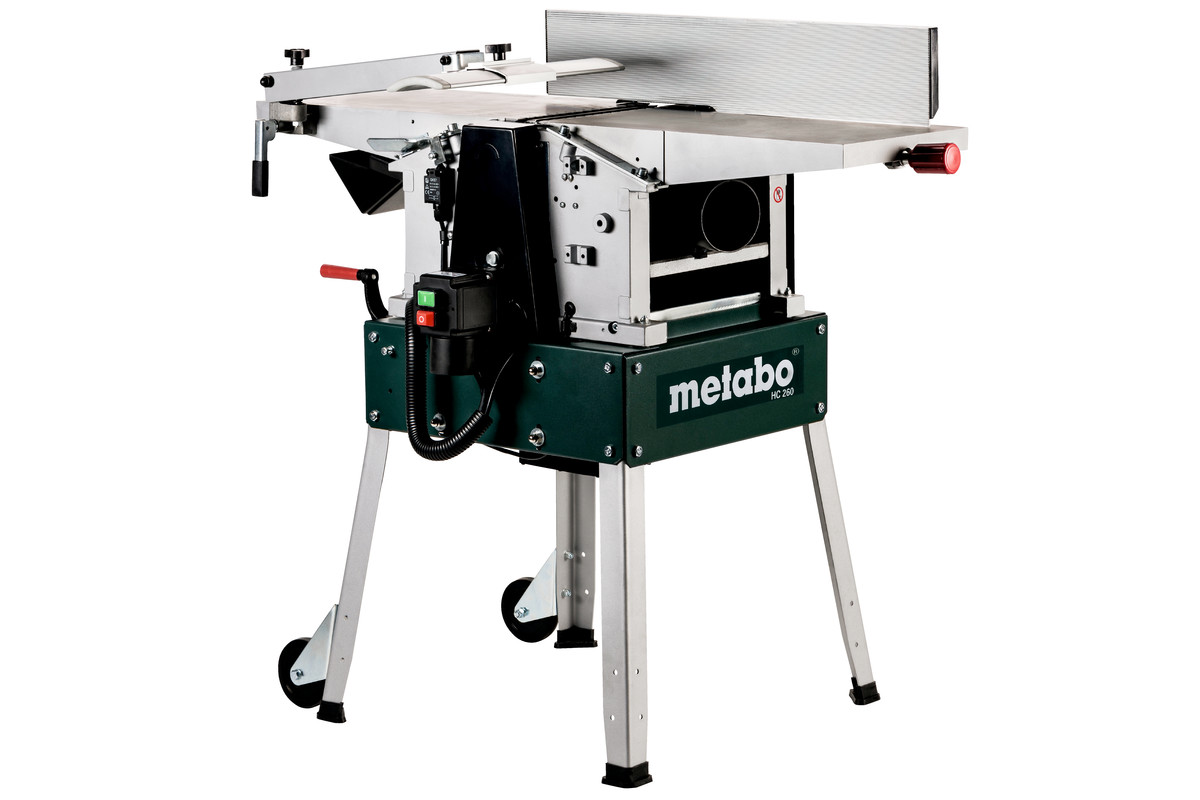Surface Planing Basics: Jointing, Thicknessing, Planing

The process of planing a wood piece involves flattening the surface of the wood in order to create a level surface for joinery or finishing. This task can essentially be achieved in a few methods. As covered before in our article on hand-planes, the Planing process can be quite a time consuming and laborious job when done strictly using hand tools.
The electric hand planer is useful for this very reason. Equipped with a pair of planing knives which bite away at your surfaces a few minute millimeters at a time. This works perfectly when working on smaller sized pieces but what if you need to flatten a larger surface? A bigger workshop machine would be required for this.
Jointer, Thicknesser, Planer/Thicknesser – What is the difference?
Jointers (sometimes referred to as a Planer)
Used primarily to flatten the long edges of your workpiece, this machine is designed with a long narrow bed and a robust solid fence that is used to keep the piece steady. This medium to heavy-duty machine consists of two to three knives which aggressively rotate to give you the finest and most precise cut. The reliability of this machine is mostly dependant on the build quality of the fence and the bed. Most woodworkers swear by a cast iron bed and would not settle for anything less. This is why machines like the Jet 6LM Planer are irreplaceable in any workshop. Equipped with both the cast-iron base and a cast-iron fence, the machine will not move – no matter how heavy or coarse the piece of timber passing the cutters may be. Jointers are usually differentiated by the width of the bed, the larger the bed the more expensive and heavier the machine – typically.

Thicknessers

The thicknesser is usually used to uniformly flatten the wider surface of the wood piece. Unlike the jointer, the thicknesser has knives/blades which are located above the bed of the machine. Very much like the jointer, the bed of this machine needs to be perfectly flat and able to withstand the weight of the timber – which is why the build quality of the bed is so important. The timber is then steadily pushed through the machine to make the cut. For the best results, one can install an infeed and outfeed table to ensure that the piece is pushed at the same height level.
Combination Planer/Thicknesser
As the name suggests, these machines comprise of the best of both the machines listed above. With these combination machines, one is able to flatten both the edges and faces of the wood piece without having to move over to another machine. This saves the woodworker space and time. Built to look exactly the same as a jointer, these machines also have a “thicknesser passage” which resides below the bed of the jointer and below these jointer knives. This passage consists of yet another bed which is used to lay the workpiece in need of Thicknessing.
 These Thicknessers and Jointers are available at Tools4Wood, buy yours today.
These Thicknessers and Jointers are available at Tools4Wood, buy yours today.


Comments
Add comment